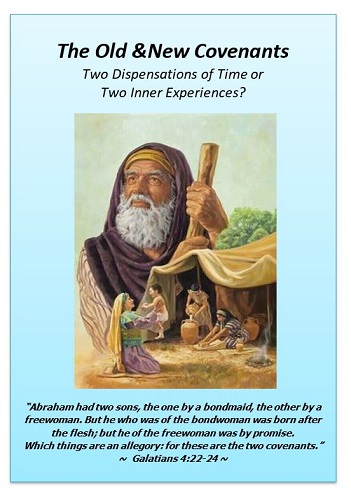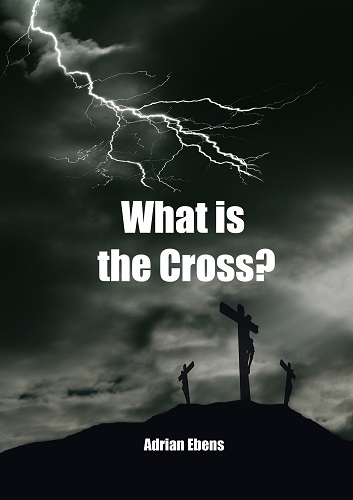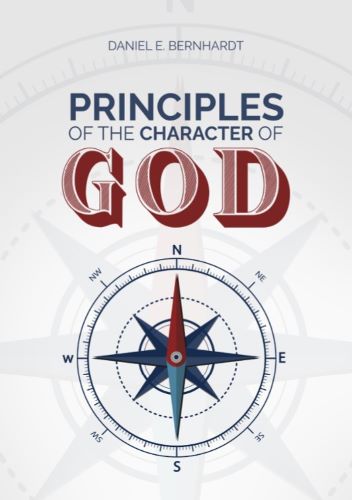Remnant Theology
Published for the first time on December 3rd, 2014
... and the dragon stood before the woman which was ready to be delivered,
for to devour her child as soon as it was born...
... And the woman fled into the wilderness, where she hath a place prepared of God,
that they should feed her there a thousand two hundred and threescore days...
And the dragon was wroth with the woman, and went to make war with the remnant of her seed,
which keep the commandments of God, and have the testimony of Jesus Christ.
(Revelation 12:4, 6, 17)
Typology develops in three phases:
- Jesus' life from Egypt to Babylon.
- The History of the Church from Jesus ascension to the end of times (1798 AD).
- The History of the Remnant (1798 - the Second Coming).
This typology will help us see where we are currently in our history as a remnant people. As we shall see, both in Jesus' life on the earth, and with the Christian church was manifested the same law, the same journey between Egypt and Babylon. Rev. 12 contains the three stories. The first story is presented in verse 4:
... and the dragon stood before the woman which was ready to be delivered,
for to devour her child as soon as it was born...
The Dragon is Satan (verse 9), but the power that he used to try to kill Jesus even at His birth as man was the pagan Rome (Matthew 2). Even in the beginning of His life on the earth Jesus had to go in Egypt because of the slaughtering of children by Herod, like Moses when he was saved by God in Egypt. Like Moses who was drawn from the water and spent 40 years in the desolate places in Jetro's home, Jesus also spent 40 days in the wilderness after His baptism in Jordan. Israel, too, after the Exodus from Egypt passed through the Red Sea (experience compared to baptism - 1 Cor. 10:2), and then spent 40 years in the wilderness.
What follows is the 3 1/2 years of Jesus' service, when He preached the kingdom of God accompanied by miracles; this corresponds to all the history of Israel as "kings and priests" of God, that had to present the praises of God's government before the rest of nation on the earth.
In the end of His mission on the earth, Jesus was "captured" like Israel who were led captives by Assyria and Babylon. This is in short the history of the Child that the Woman (Church) in Rev. 12 gave birth to. What follows is the history of the Woman herself as it is given in verse 6:
... And the woman fled into the wilderness, where she hath a place prepared of God,
that they should feed her there a thousand two hundred and threescore days...
After Jesus sacrificed Himself on the cross on the day of Passover, this was when the spiritual Israel (the Christian church) came out from the spiritual Egypt. What is Egypt type of? It represents the world without God (Isaiah 31:3). Fifty days after Jesus' resurrection comes the the baptism with the Spirit on Pentecost like Israel's passing through the Red Sea (Acts 2). Several centuries later the church was found in the wilderness for a period of 42 prophetic months (538-1798 AD). During that time the two witnesses are clothed in sackcloth (Rev. 11) and their actions are similar to those of Moses and Elijah. As in the time of Elijah did not fall rain for 3 1/2 years, so during the 1260 prophetic days of the Middle Ages the spiritual rain was restrained because of the apostasy in official Christianity. In the end of this period, Christian churches went into Babylonian captivity and therefore God's messengers declare that Babylon was fallen (Rev. 14:8). This is the history of the woman in Rev. 12. Afterwards Satan put his efforts toward the remnant:
And the dragon was wroth with the woman, and went to make war with the remnant of her seed,
which keep the commandments of God, and have the testimony of Jesus Christ.
(Rev. 12:17)
The history of the Remnant repeats the histories of Jesus and the woman. The adventists came out from the spiritual Egypt led by a prophet, God gave them the truths about the heavenly sanctuary, the Law of God, the Sabbath and so on. Ellen White wrote about this the following:
The history of ancient Israel is a striking illustration of the past experience of the Adventist body. God led His people in the advent movement, even as He led the children of Israel from Egypt. In the great disappointment their faith was tested as was that of the Hebrews at the Red Sea. Had they still trusted to the guiding hand that had been with them in their past experience, they would have seen the salvation of God. If all who had labored unitedly in the work in 1844, had received the third angel’s message and proclaimed it in the power of the Holy Spirit, the Lord would have wrought mightily with their efforts. A flood of light would have been shed upon the world. Years ago the inhabitants of the earth would have been warned, the closing work completed, and Christ would have come for the redemption of His people. {GC 457.2}
It was not the will of God that Israel should wander forty years in the wilderness; He desired to lead them directly to the land of Canaan and establish them there, a holy, happy people. But “they could not enter in because of unbelief.” Hebrews 3:19. Because of their backsliding and apostasy they perished in the desert, and others were raised up to enter the Promised Land. In like manner, it was not the will of God that the coming of Christ should be so long delayed and His people should remain so many years in this world of sin and sorrow. But unbelief separated them from God. As they refused to do the work which He had appointed them, others were raised up to proclaim the message. In mercy to the world, Jesus delays His coming, that sinners may have an opportunity to hear the warning and find in Him a shelter before the wrath of God shall be poured out. {GC pp. 457, 458.1}
The people of the Remnant repeat the history of Israel. When God spoke in existence the advent movement in the years prior to 1844 and at the very year of the Disappointment, when adventists were forced to leave the Protestant churches, this was a kind of Exodus from Egypt for them. This remnant was called to proclaim in sequence the first, the second and the third angels' messages, but when the proclamation of the third message commenced few were harmonized with the light of this angel and this brought a 40 years period wandering for the remnant like Israel in the dessert. In His mercy, God gave one more chance to the Remnant which was already established as a denomination of the Seven Day Adventists. In 1888, at the conference in Minneapolis, the elders A. Jones and Waggoner presented new reasons for the acceptance of the third angel's message and if those reasons were received by faith, the latter rain would fall and the work would be finished long ago and Christ would have already come. Unfortunately the messages were not accepted and the Remnant people continued to stay in their Laodician state. During that long time of delay, the apostasy was unavoidable, a lot of delusions entered that denied the fundamental principles given to the fathers in the Remnant; similarly to Israel the Remnant people built an administrative structure which placed "earthly king" on the place of God's direct government. Similarly to Israel, the Remnant longed to be like the other nations (ecumenism).
From 1888 to present times there are nearly 130 years - during that time the "the walls and the streets of Jerusalem" remained unfinished as were in Nehemiah's time (13 years - Look Ezra 7:7 cf. Nehemiah 1:1-3; 2:1). The people entered into illegal relationships with Babylon. The people ceased believing in the promises of the everlasting covenant, like Abraham who for the same period of time (13 years) lived with the illusion that Ishmael was the promised seed (Gen. 16:16; 17:1, 17, 18, 24, 25; 18:10). But the 6000 years of human history of slavery are almost completed and the time when God should work for His name's sake is nigh. It is time for Elijah to prepare a people for the Fourth angel's last proclamation.
The time of restoration with Ezra and Nehemiah is a pattern for the history of adventism. The three angel's messages were presented in the sequential decrees by Cyrus, Darius, and Artaxerses, and they were presented as a single command (decree) (Ezra 6:14). The thirteen-years-delay presents the time from 1893 to the present - a period when the restoration was stopped because of the adjustment to Babylon. The Nehemiah's work presents the renewed work of the Fourth angel. But this work was not accepted during the time of Jones and Waggoner (1888-1893), it was not accepted either in the time of Robert Wieland and Donald Short (1950-55). The third appearance of the Fourth angel is the final and it will finish the work:
"I will go and return to my place, till they acknowledge their offence, and seek my face: in their affliction they will seek me early. Come, and let us return unto the LORD: for he hath torn, and he will heal us; he hath smitten, and he will bind us up. 2 After two days will he revive us: in the third day he will raise us up, and we shall live in his sight. 3 Then shall we know, if we follow on to know the LORD: his going forth is prepared as the morning; and he shall come unto us as the rain, as the latter and former rain unto the earth." Hosea 5:15; 6:1-3
"Blessed are those servants, whom the lord when he cometh shall find watching: verily I say unto you, that he shall gird himself, and make them to sit down to meat, and will come forth and serve them. 38 And if he shall come in the second watch, or come in the third watch, and find them so, blessed are those servants." Luke 12:37, 38
What are the main characteristics of Nehemiah's restoring work? He had to rebuild the wall along with the gates of the city and its streets (Nehemiah 1:3; Dan. 9:25). The wall is the protection of the city (The Law of God through His Spirit), the gates and the streets are its infrastructure which provides an easy access. The return to the statutes of God's law and particularly the feast of the Tabernacles (Nehemiah 8). A confession of sins as a result to the apostasy that includes confession of spiritual ancestors' sins (Nehemiah 9). Breaking of intimate (family) bonds with Babylon, and the restoration of the true service of Levites and the tithe (Nehemiah 10-12). The final breaking away with the forbidden family ties, and the throwing out of Tobiah from the Temple, and the restoration of the Sabbath (Nehemiah 13)





